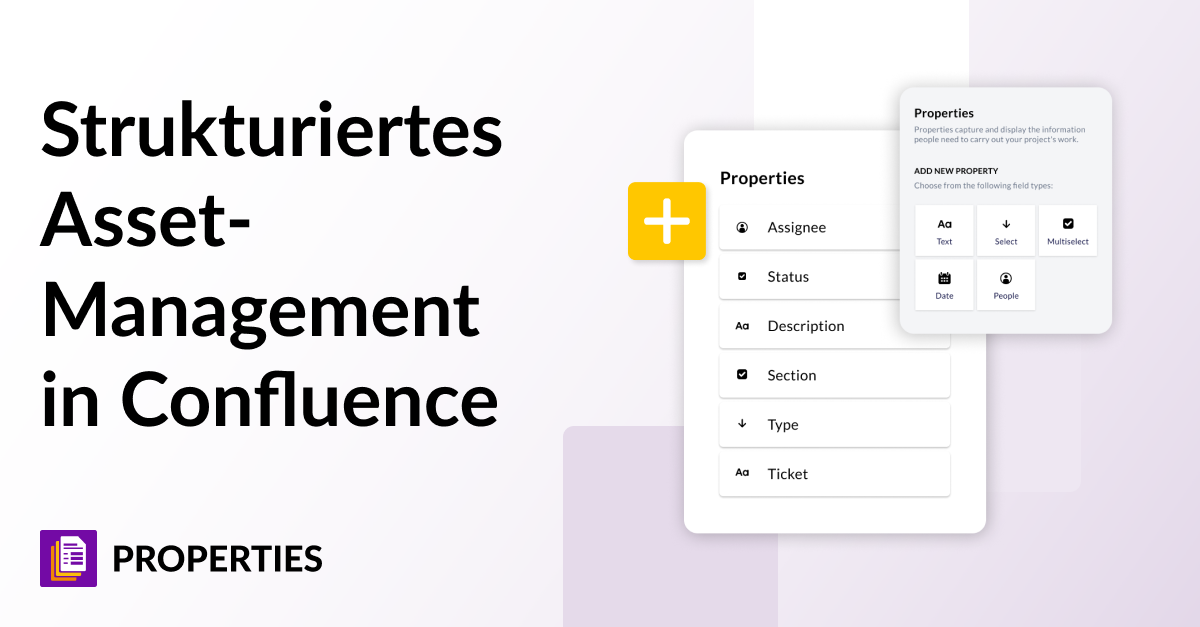What is the biggest challenge in organizing a company? Is it brainstorming, the constant search for new products or working with customers? No, those are more the inspiring and beautiful aspects, aren’t they? The real struggle in most companies is day-to-day administration. And few processes are as matter-of-fact and dry as asset management. However, that does not change its importance.
Asset management isn’t just about knowing where things are. It is about organizing the company and its property efficiently. A simple example: what happens when a manufacturer issues an urgent recall of laptop power supplies because of a potentially dangerous defect?
Does your team know right away where all affected devices are located? Or does the entire company have to be flooded with emails to find out who owns them? Especially since in a case like this hurry is required and there is actually no time for organizational overhead.
A solution for Confluence Cloud
There is no question that administrative teams need a software solution that supports such processes and automates them as far as possible – preferably one that is as flexible as it is straightforward and lean. If this solution could also be integrated into the central documentation tool Confluence, a lot would be gained. Because then the team would have control over their assets and at the same time would benefit from the well-known advantages of the Confluence platform: security, revision history, usability, familiarity.
We can use the asset management application with the app Properties for Confluence Cloud show fine.
The possibilities of properties
The Confluence app offers users a simple visual interface that allows for effortless and clear asset control. The basis is a form for data entry (Property Group) that we create using the handy drag-and-drop template helper. And for managing our assets, Properties comes with a number of helpful features:
- Properties offers custom fields, metadata, databases and automated reports.
- Data can be presented in the form of tables or maps.
- The solution includes a powerful search function with specific parameters and filters, allowing the team to decide how complex or straightforward a search is.
- Thanks to a user-friendly, elegant interface, Properties is easily accessible and presents no barriers to entry for Confluence users.
- All forms are automatically cross-referenced without the team having to do anything manually.
- Forms can be edited “on the fly” at any time, with changes propagating (if desired) throughout the database.
Here’s how it works
Properties is a Confluence native app. Each asset that is entered gets a dedicated Confluence page. One Property Group is a macro that contains information about certain properties, i.e. a kind of database. Also Property Groups and Property Group Reports have their own unique Confluence pages.
Let’s go through the use case step by step. First, let’s create a new Confluence page and look for the macro Property Group.
We select the desired macro, after which a new page will open. There we have two options:
- We can add an asset to an existing one Property Group add to.
- We can get a new one Property Group create.
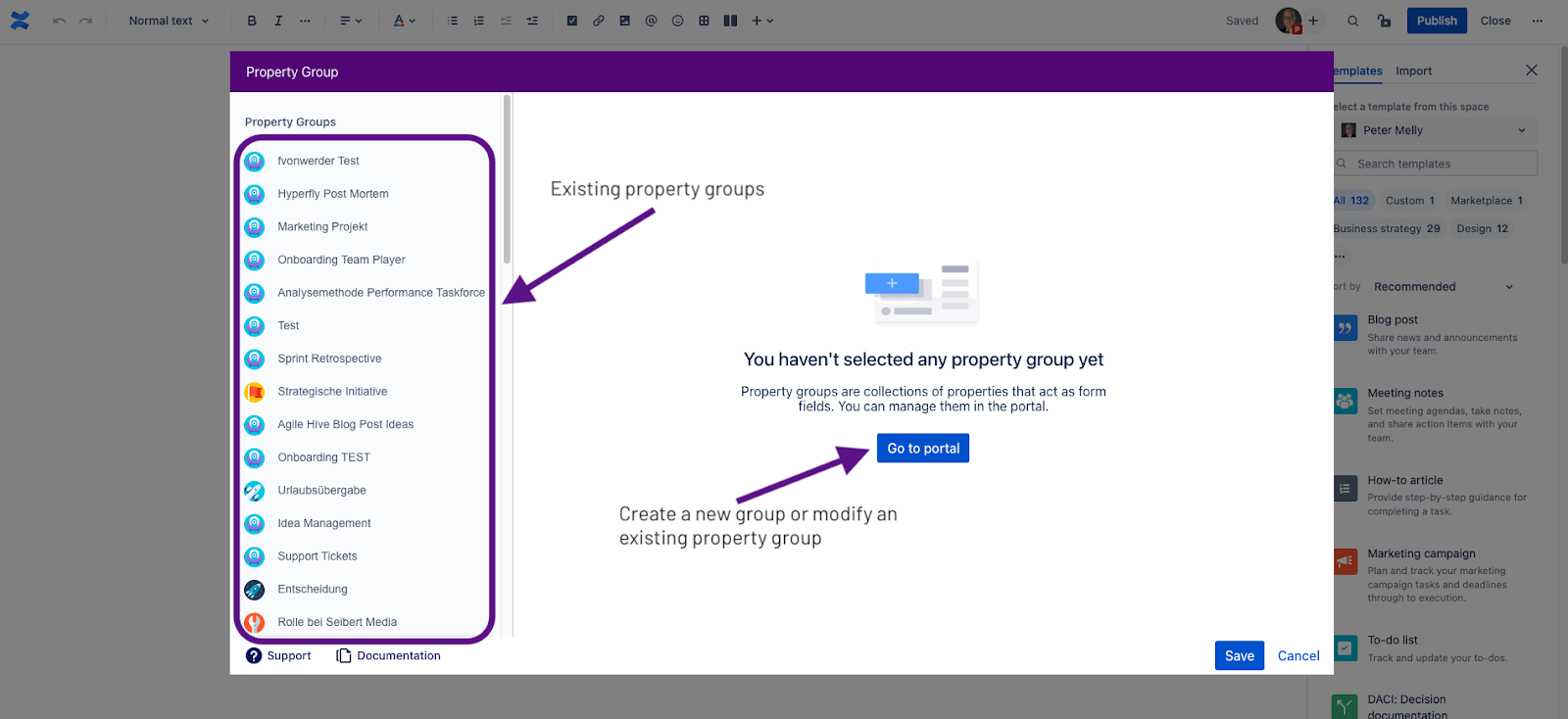
Create a property group
We choose the second option and click the button Go to portalwhich brings us to the following screen:
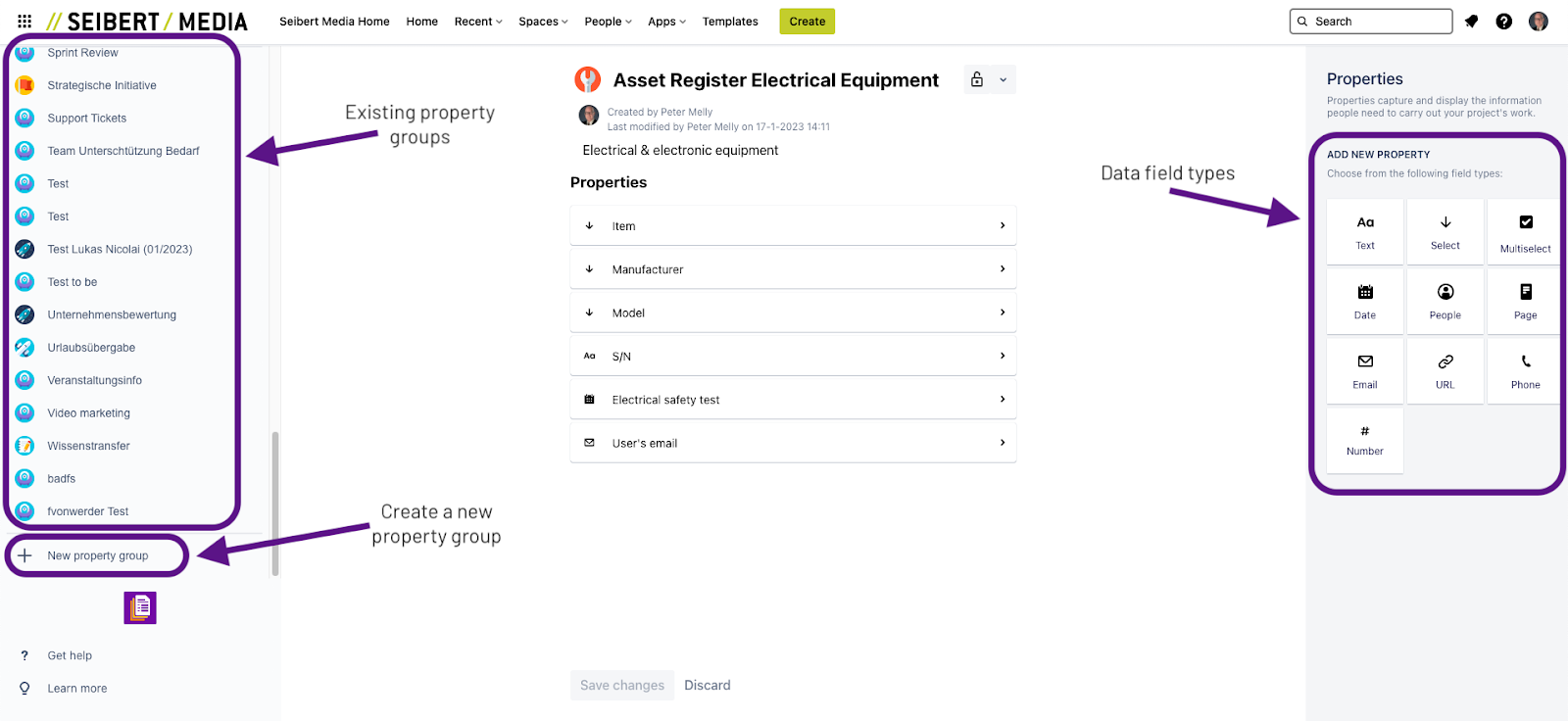
There are these options:
- A new Property Group create (i.e. the asset database)
- an existing one Property Group select to add a new property to it (Asset)
- Add input fields to a new or existing form by clicking on the icons in the selection box.
Now for a new one Property Group to create, we choose + New property group and follow the on-screen instructions. Then we are prompted directly to build a data entry form.
The form for data entry
On the right side we find various form options and fields that we can integrate into the form with a click according to our requirements:
- Text
- Select – Drop-down-Menü
- Multiselect – drop-down menu of options
- Datum
- persons
- Pages in Confluence
- URL
- phone number
- Numeric Fields
When creating the form, we can easily put the desired fields in the correct order using drag & drop. The following video shows how easy this works, in which a Property Group On behalf of Asset Register Electrical Equipment is created.
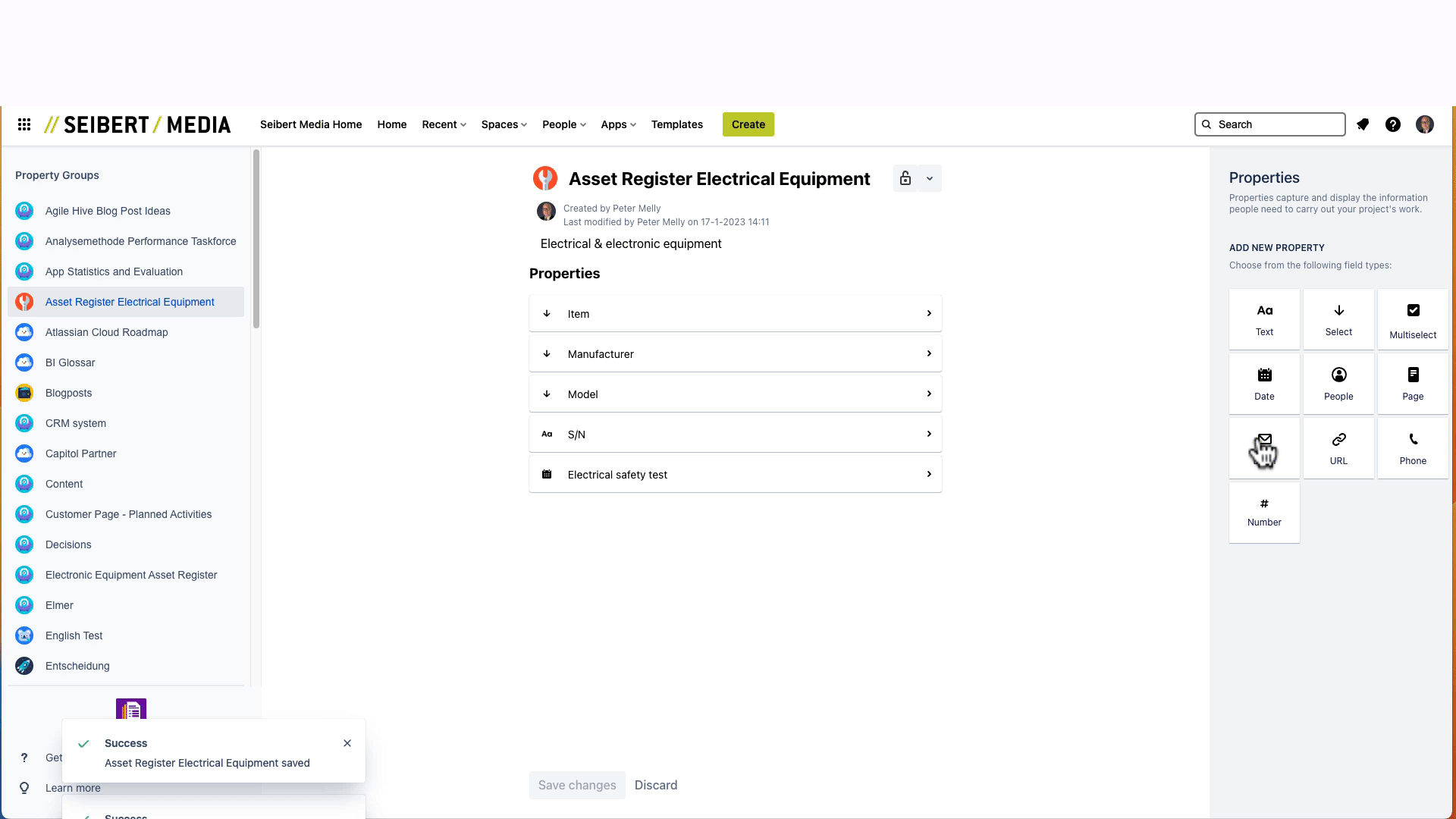
Data entry via an existing form
As mentioned above, each asset gets its own specific Confluence page. So we create a new page in the corresponding area and add the macro Property Group added. Here we select the group we just created: Asset Register Electrical Equipment.
The system immediately presents us with the input form that we built earlier. So now let’s enter the required information.
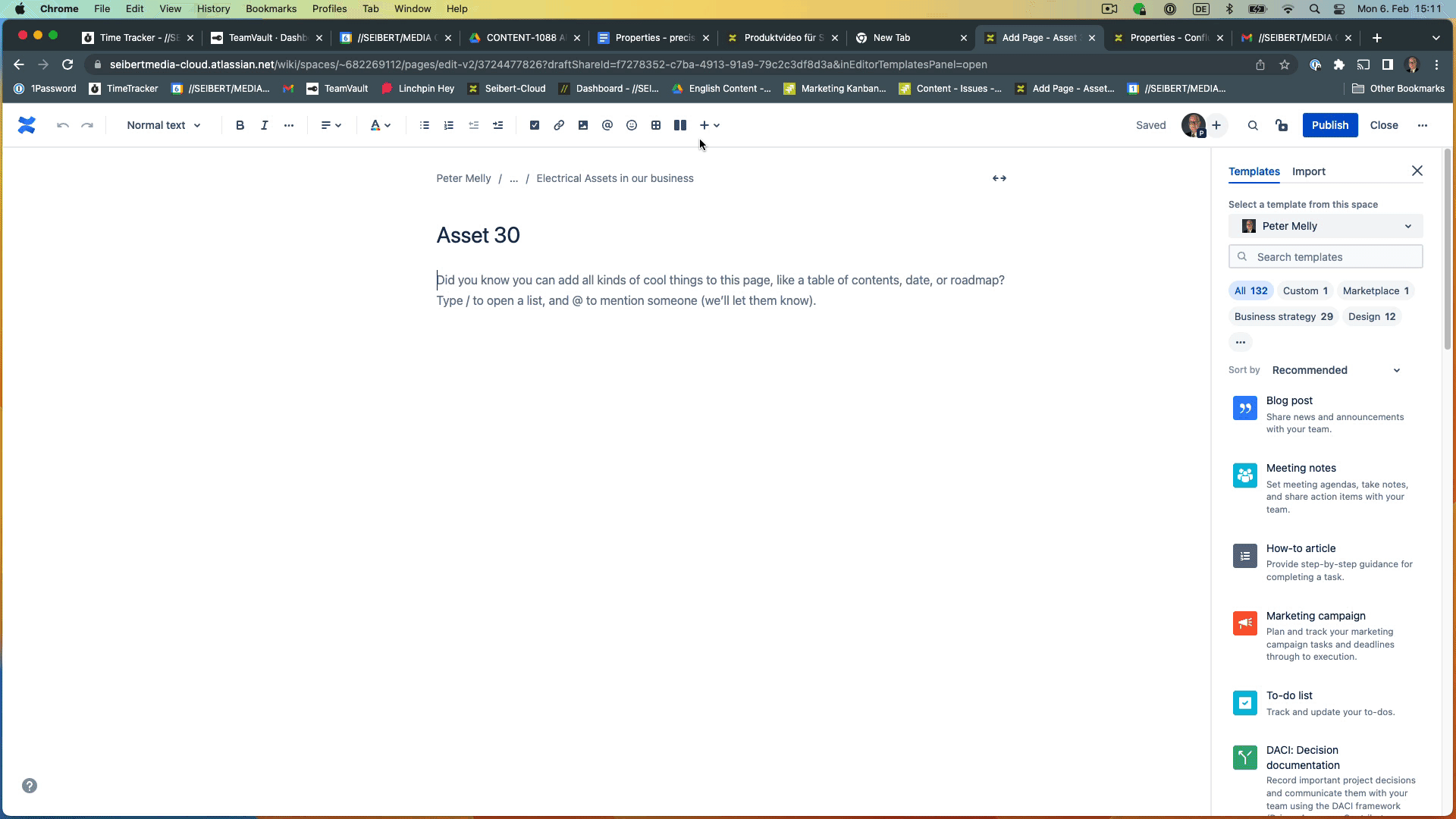
As if by magic – the data analysis
Properties unfolds its potential when it comes to data analysis. For example, we can filter data and apply logical operators to filter out the raw information we need. For this we create a new page and add the macro Property Group Report a.
On the screen that now follows, we select the appropriate one from the drop-down list on the left Property Group. Then we see the complete overview of all assets in this group.
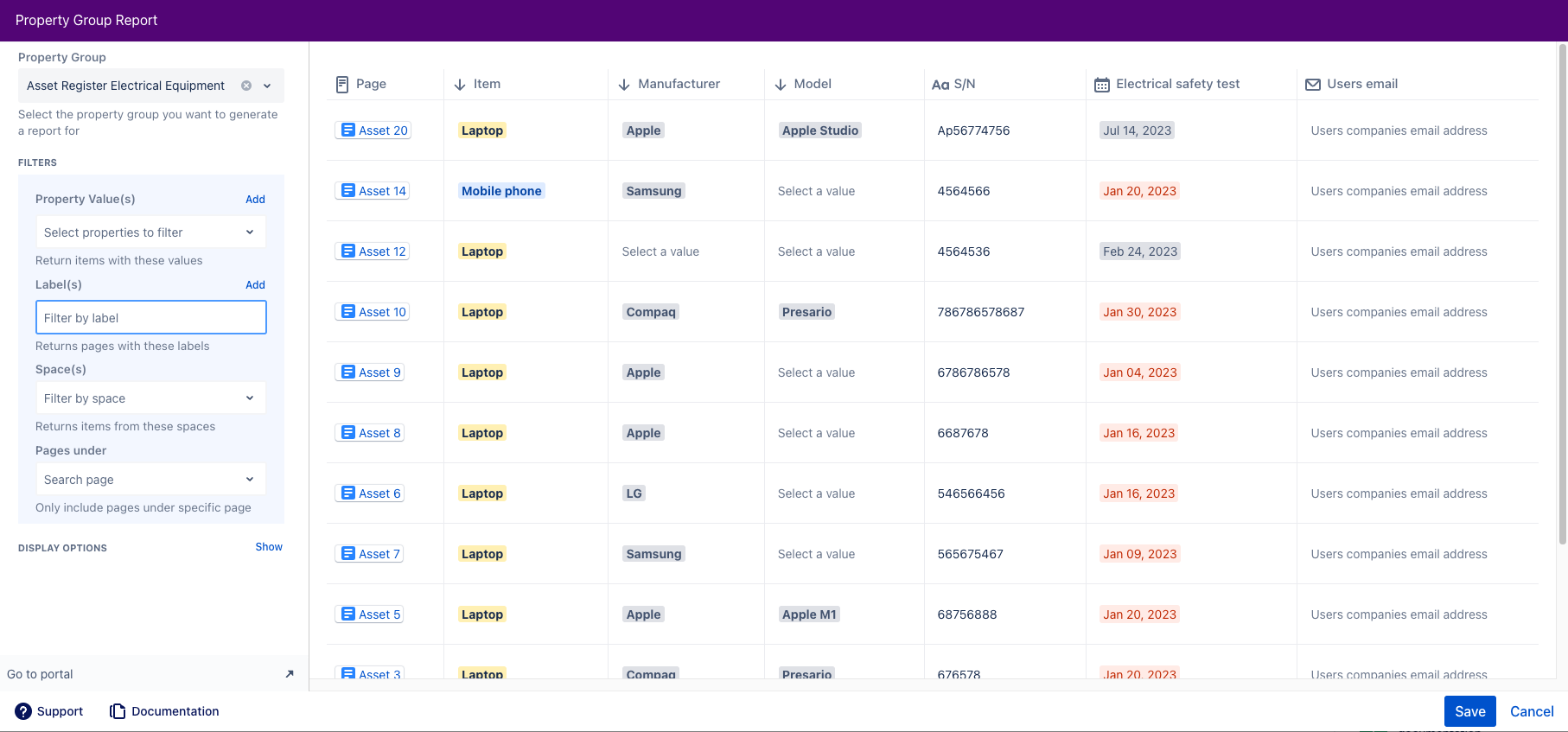
We have the option to refine and narrow down the output via the filter box on the left:
- property value
- Labels (page tags)
- areas
- pages
When outputting the results, we can choose between the table view (see above) and a map view:
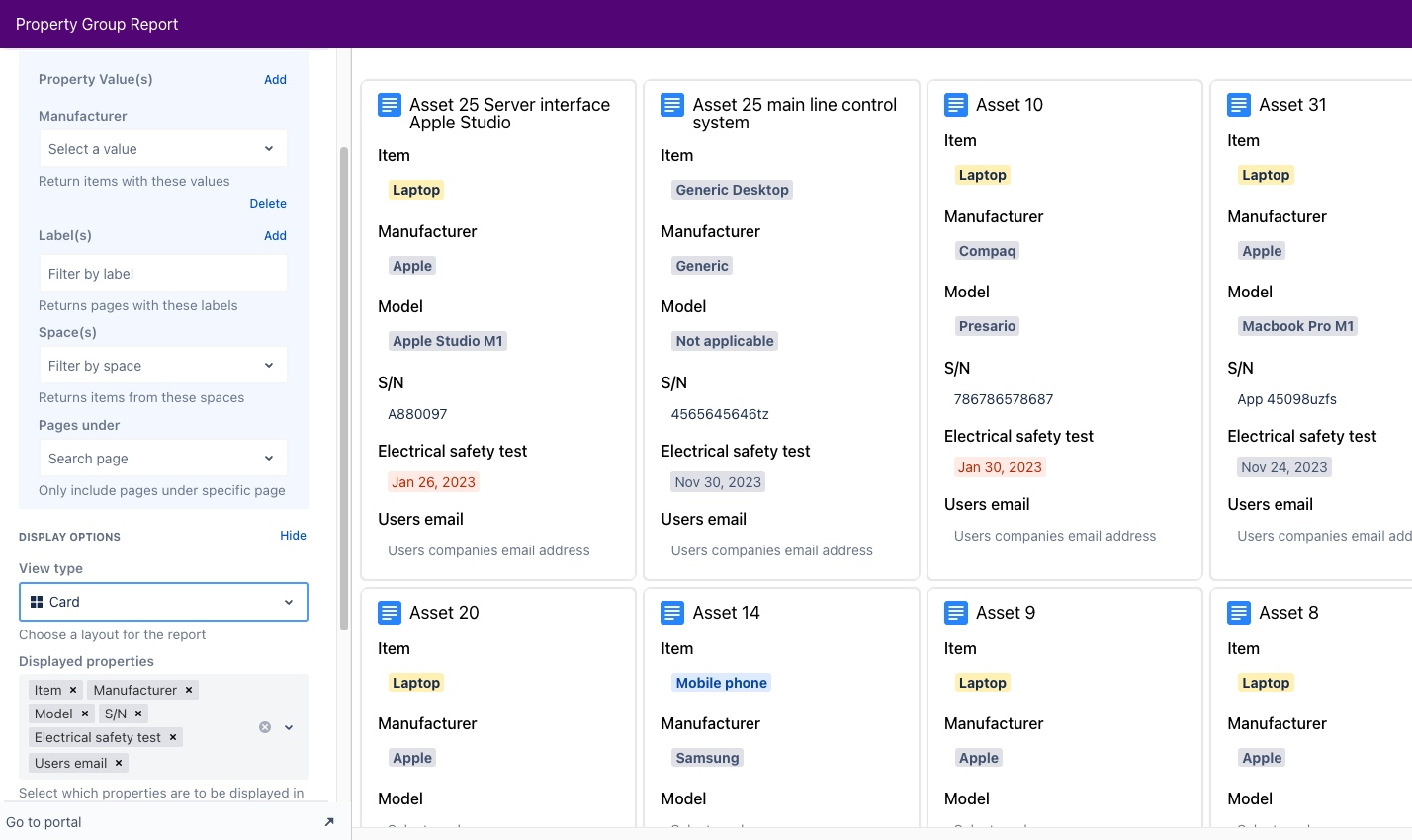
Confluence and the Properties app
Challenges and surprises naturally occur when you don’t expect them. This is why it is so important to set up a comprehensive information and knowledge portal in Confluence where users can find the information they need at any time.
Properties and Confluence form a well-rehearsed team that can play to its full strengths together. The app helps to store important information and data in a structured manner and to make it searchable in a targeted manner. And Properties is open to many advanced use cases and interacts with many other marketplace apps for Confluence, as shown in the following example where the app Checklists for Confluence additional support for the team’s asset management.

If your company uses Confluence and is still looking for a good internal solution for systematic asset management without immediately using an oversized third-party platform, it is worth taking a look at the possibilities that Properties opens up for Confluence.
Do you want to know more? Then simply arrange a demo session, in which our team shows you the possibilities and functionality of properties for Confluence live. Or are you interested in a non-binding test? Properties is available for installation on the Atlassian Marketplace. And if you have further questions, feel free to talk to us!
Further information
New Features: Properties gets three new features
Properties and the efficient organization of information in Confluence Cloud
All customer data in one place – in Confluence Cloud with properties
Properties app: Structured documentation and efficient organization of leads and sales contacts in Confluence
